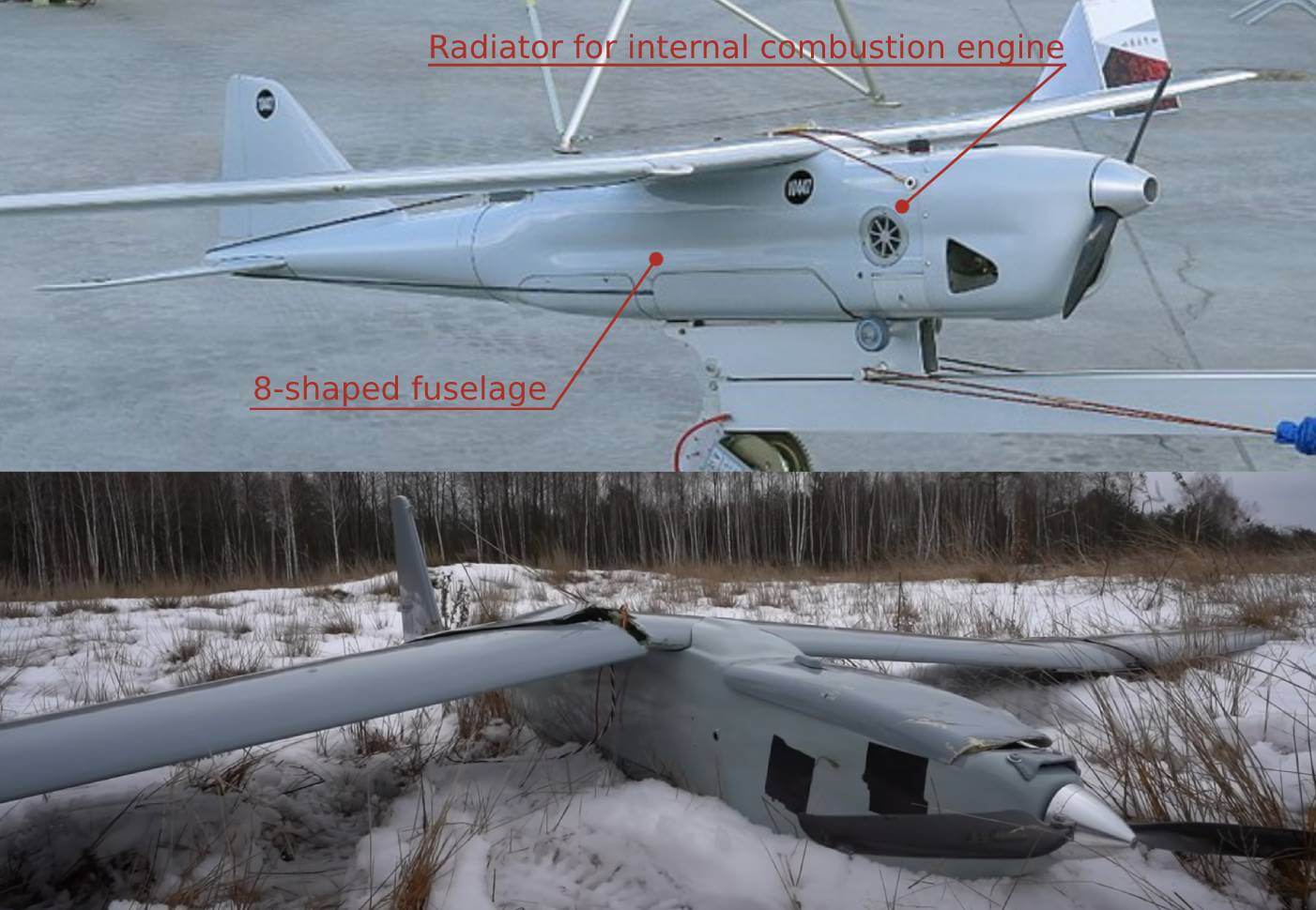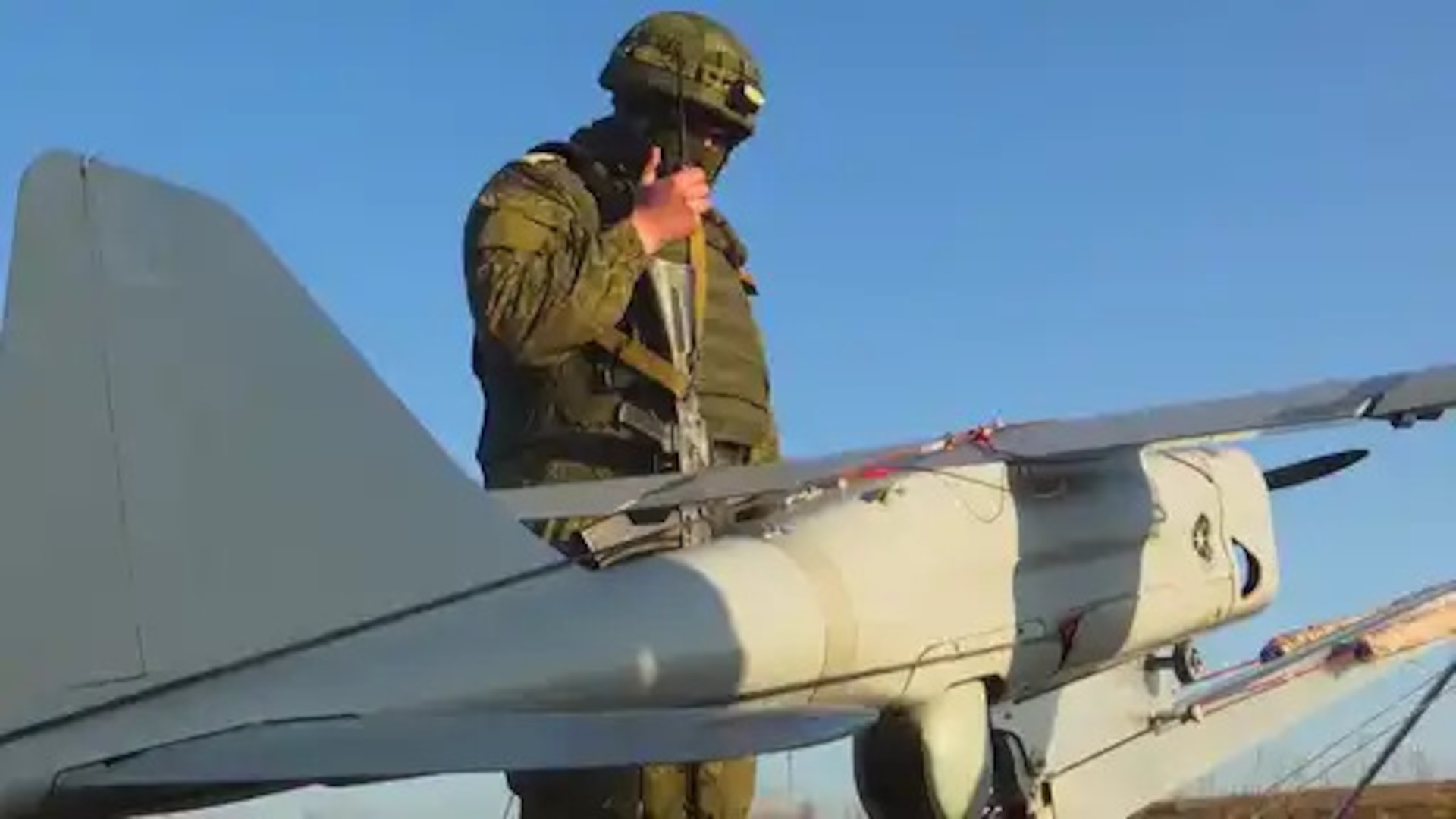Orlan 10 Drone - 25 August 2022 Orlan-10 of the Air Assault Forces of the Russian Federation, taken by EW, August 2022. Photo source: Ukrainian Air Assault Forces
The command of the air strike forces of Ukraine reported the capture of the Russian UAV. Officials released a photo of the drone.
Orlan 10 Drone

Orlan-10 of the Air Assault Forces of the Russian Federation, August 2022, taken by EW. Photo credit: Ukrainian Air Assault Forces
Despite Their Poor Reliability And Performance Orlan 10 Is The Best Uav In The Russian Military, Even The Cost Is Too High
"During one part of the mission, the radio-electronic warfare unit of the Air Force of Ukraine was disabled," the Defense Ministry said in a statement.
Released photos show the Russian plane lost contact with its control center and crashed when it was hit by electronic weapons of the Ukrainian Air Force, after which it was taken into the hands of Ukrainian authorities.
Air Assault Forces of the Russian Federation Orlan-10, taken by EW, August 2022. Photo source: Ukrainian Air Assault Forces
In their statement, the paratroopers stressed that they would continue to fight and disable enemy aerial surveillance equipment.
The Crews Of The Uav Orlan 10 Of The Ussuriysk Separate Guards Unit Of The Airborne Troops Practiced The Search And Detection Of The Objects Of The Mock Enemy
As previously reported, on the eve of a full-scale invasion of the Russian Federation, Ukraine's Defense Minister, Oleksiy Reznikov, prioritized electronic warfare (EW) systems for training Ukraine's military.
“There is a great need for us to develop what is called electronic warfare and electronic defence. The world is moving towards unmanned aerial vehicles, unmanned helicopters, unmanned ships, unmanned everything. A complete robotics work in progress. We understand that we need to be as early as possible in the process of closure, protection and surveillance," the defense minister said.
The Russian Orlan-10 is a multi-purpose, medium-sized unmanned aerial vehicle. It is used at a distance of 120 km from the control center. In autonomous mode, it can fly a distance of 600 km.
Its weight is between 14 to 18 kg with a 5 kg weight. He uses a special catapult to launch. Time Orlan-10 in the air - up to 18 hours, flight speed - 90-150 km per hour. Last month, the Russian military held a major annual event called Kavkaz-2020 in the southern Russian military region. Kavkaz exercises are held annually, which may mean that they are only military training and military games. And in some ways, this year has a twist. But at least in part, Kavkaz-2020 was a feat: an event that demonstrated for the first time Russia's ability to use drone warfare on a large scale and its enormous potential for operations against the United States and NATO.
Another Russian Drone Shot Down In Syria. Overview Of Orlan 10 Crashes From Syria To Ukraine
This year's war games are characterized as defensive in nature, and a government statement from Moscow said they are aimed at supporting the fight against terrorism. They have about 81,000 Russian soldiers and 81,000 foreign soldiers, including hundreds of fighter jets, about 250 tanks, 450 military vehicles, 200 artillery pieces and a warship.
The program covers land, air, naval, air defense, engineering, weapons and chemical, radio systems, nuclear areas from the Caspian and Black seas in southern Russia to the Caucasus and Volgograd. Kavkaz-2020 also saw Russian military training with Armenian counterparts, Iranian missile boats in the Caspian Sea, Chinese military planning operations, Belarusian and Pakistani military personnel, as well as troops from the breakaway Georgian region of Abkhazia in South Ossetia and Crimea. . Withdrawal from Ukraine in 2014. Other states include Syria, Mongolia, Myanmar, Indonesia, Sri Lanka, Turkmenistan and Kazakhstan. (Apparently, the Caucasus continued without several important international targets, including Azerbaijan, India, and Serbia.) According to the Russian Chief of Staff, Gen. According to Valery Gerasimov, Kavkaz is based on Russia's military experience in Syria and Libya.
Russia demonstrated a new combat formation believed to be a "mobile echelon" that works with various vision, fire control and strike systems. It's ostensibly about defeating cruise missiles and unmanned drones, but it hinges on Russian detection of vehicle-borne explosive devices in Syria. It is important to note that the Russian artillery system has little innovation for maneuver, reconnaissance and heavy artillery fire and defense operations.
The vessels are also blocked, replacing them with anti-corruption and anti-quick (again, it looks like they are rebels or terrorists). The Black Sea Fleet has successfully conducted surface attack and land attack operations, including the Kilo-power submarines with the Caliber cruise missile Bal Harbor with a range of up to 185 km and the Bastian anti-ship missile system. .
Russia Was Lagging Behind In Drone Capabilities, But Is Now Catching Up
Air defense operations are based on the S-400 surface-to-air missile system and the Pantsir-S1 anti-missile system at the Ashuluk test range. Russia's air defense system counters attacks by technologically advanced state actors targeting enemy radars, anti-aircraft units and airfields. Although the Russian state describes these actions as defensive and focused on deterrence and counter-terrorism, the emphasis in terms of air defense is clearly on countering anti-ship attacks such as General. Gerasimov agreed. This is also not new - it has been an important part of Russian military strategy and training since the time of Marshal Nikolai Ogarkov.
But the most important part of war games is the use of drones to help target and destroy enemy forces ("terrorists," according to the Russian Defense Ministry). At least three types of drones—the Outpost, Orlan-10 and Aleron-3—are operating near the Kapustin Yar test. The Outpost is the Russian version of the Israeli intelligence agency; Orlan-10 is a system that can consist of three to five different aircraft each, including reconnaissance and computer warfare; And the Eleron-3 focuses on the command and control field. According to reports, drones fly at an altitude of one lakh five thousand and target enemy assets. The machines, working together, found a mobile military unit to focus on, but most of the swarms were used for reconnaissance, surveillance and reconnaissance and not for attacks. The Russian military has demonstrated in Ukraine that its warships are armed with multiple rocket launchers, particularly the Smerch and Uragan systems. These weapons nearly wiped out two Ukrainian soldiers in one minute in Zelenopilya in July 2014, when Russian forces were massing Ukrainian brigades for offensive operations. Moments later, they were targeted in a multi-barrel rocket attack with devastating results. It should be noted that Russia has an advantage over the United States and NATO in terms of both missile and rocket weapons, and when combined with drone units, that is a cause for concern.
From a geopolitical point of view, the Caucasus lost Moscow's market share to the influence and power of other states in the Caucuses and the Balkans, and this study showed that even a temporary conflict between India and China could not rent. Moscow considers China, Iran, Belarus and Armenia as major partners. And surprisingly, Russia continues to push the envelope in the international missions of the Organization for Security and Cooperation in Europe, which has 80,000 troops but numbers less than 13,000 - the number that would be above. Russia wants to invite international observers.

From a strong military point of view, Kavkaz-2020 demonstrated several capabilities of the Russian military, including joint and potential cooperation, joint civil war, counterinsurgency, precision countermeasures, and coordinated operations to defend the air against the enemy. The enemy is more. Russia has emphasized that the exercise is defensive and focused on non-state actors, while Kavkaz is more focused on fighting an enemy state. The most interesting and significant thing is the use of Russian unmanned aerial vehicles to fight against enemy formations. The use of these unmanned vehicles shows that the Russian General Staff continues to work hard to improve fire-fighting and precision-efficiency in defense operations and is furious. Russia is using its military experience in energy security in Syria to launch drone operations against high-tech Western forces. So if there's one thing the United States and its allies should know from Caucasus-2020, it's Russia's efforts to integrate drones into its military capabilities.
Us Believes Russians Have Begun Training On Iranian Drones
Joe Warner is a consultant in defense diplomacy, strategic intelligence and military operations. He is an adjunct scholar at the Modern War Institute and author of "Canada's Asia-Pacific Security Dilemma." He served as legal advisor to the Minister of National Security and Minister of Justice and the Attorney General of Canada, the Hon. G. Peter McKay from 2008 to 2014.
The views expressed are those of the author and do not necessarily reflect the official position of the United States Military Academy, the War Department, or the Department of Defense.
Articles and other content appearing on the Modern War Institute website are unauthorized expressions. The views expressed are those of the authors and do not necessarily reflect them

0 Comments